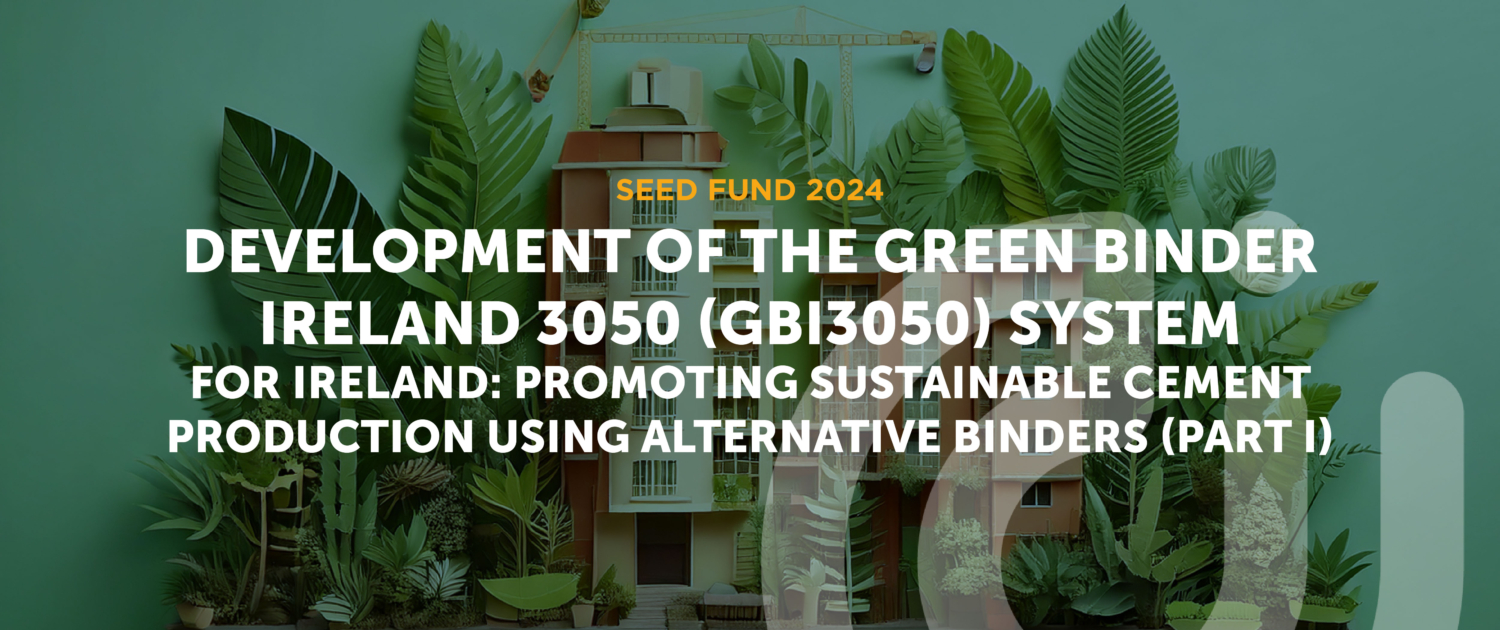Development of the Green Binder Ireland 3050 (GBI3050) system for Ireland: Promoting sustainable cement production using alternative binders (Part I)
The sole dependence of the Irish construction industry on high-clinker Portland cements is delaying the adoption of sustainablepractices. In addition, the excessive utilization of these cements in concrete makes the construction sector a primary contributor to ournational carbon emissions. These cements have a high embodied carbon and there is an imperative to use significantly lower clinker contents.
The Department of Enterprise Trade & Employment have this week (28-05-2024) introduced a requirement for a minimum of 30%reduction in clinker content for public projects. In this context there is a clear need for more sustainable concrete binders, but the routeto market for such products is unclear, as standards are based around “traditional” cement products.
This project focuses on developing a performance framework for evaluating innovative low-clinker cements. The primary concernlies with the absence of a systematic framework in Ireland for new materials. This stifles innovation and maintains the high carbonstatus quo. This project proposes to develop a comprehensive evaluation framework, the Green Binder Ireland 3050 (GBI3050) system, and will provide a clear methodology for evaluating innovative cements. This will be based on the current international stateof the art, and include guidelines, testing methods, and economic and environmental evaluations.
A comprehensive framework that supports the development of low clinker cements would be the key outcome of the project. Thiswould promote more sustainable construction practices and support Ireland’s climate action goals of 2030 and 2050.
Collaborators:
Collaborators
Principal Investigator

Dr. Mehran Khan
Assistant Professor at University College Dublin
Dr. Mehran Khan is currently an Assistant Professor at University College Dublin, Ireland. His research focuses on sustainable construction materials, including 3D-printed concrete, low-carbon concrete, fiber reinforced concrete and its mechanical performance, fracture characteristics, durability, fire resistance, cracking behavior, and compressive modeling of hybrid fiber-reinforced concrete. He serves as Principal Investigator (PI) on multiple academic and industry projects related to sustainable construction. He holds various editorial roles, including Associate Editor, Guest Editor, and Editorial Board Member of several SCI journals. Additionally, he has participated in international conferences as a Speaker and Technical Committee Member.

Dr. Ciaran McNally
Associate Professor at University College Dublin
Dr Ciaran McNally is a civil engineer and obtained his PhD in 2001 for his work on alkali aggregate reaction in Irish concretes. Subsequent to that he joined the Centre for Materials and Manufacturing in UCD, where he worked as a research engineer, covering materials research, product development, process certification and technology transfer to industry. He is currently a lecturer in the School of Civil Engineering and in 2015 obtained a Professional Diploma in Teaching and Learning. To date Dr McNally has won over 2 million Euro in research funding. He has coordinated both European and national projects, including the 3.2 million Euro Marie Curie Initial Training Network TEAM (grant no 238648). His research covers a wide array of materials, including concrete, asphalt and FRP. In recent years he has extended this to include digital design and optimisation. To date, he has published over 100 peer reviewed papers.






